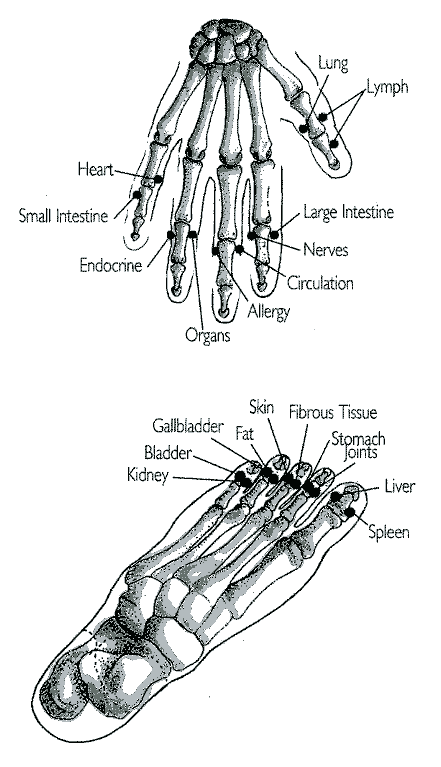Electrodermal Testing
Electrodermal testing is used to conduct a comprehensive evaluation of a person's energetic health and balance. This process involves measuring electrical conductivity at responsive points (meridian points) on the skin – typically on the hands and feet. The locations of the test points generally correspond to those of acupuncture points. These measurements are recorded to help provide a profile of a patient's present condition.
According to European medical research, acupuncture points are related to the body's organs and organ systems. Major groups of points are connected through channels, or meridians. Twenty of these meridians begin or end on the hands and feet.
As a patient moves toward or away from health the condition of any particular organ or system can be sensed along the meridians at representative points like those shown above. As a result, stress associated with the corresponding organs can be surveyed using the indicated points.
After the initial measurements have been taken and recorded, the results can be reviewed. If stress values are above or below equilibrium, a computer database linked to this system will allows consideration of a wide range of possibilities that might help the client regain a healthy balance. The system allows consideration of thousands of herbal, homeopathic, and nutritional products.
Overall, electrodermal testing provides a completely non-invasive method for gaining valuable information about the body's vital functions. The primary objective of this procedure is to disclose patterns of stress and to provide feedback for use in a program to help restore each system and meridian to an appropriate balance.
Electrodermal testing does not provide a medical diagnosis. If clients suspect that they need medical intervention, they should consult their physicians.
Benefits of of Electrodermal Testing:
- Non-invasive sensitivity screening. No scratch testing or injections are necessary.
- Nutritional evaluations can help patients who are looking for nutritional balance.
- Consider possible complementary approaches that may help a patient achieve a more balanced energetic state.
- Identify specific dental stressors that might contribute to health problems.
- Test for toxicity and drainage levels and their effects on energy and organ functions.
- Help patients maintain the structural or functional integrity of important body systems.
- Suggest whether there is a condition present that may require traditional medical treatment.


